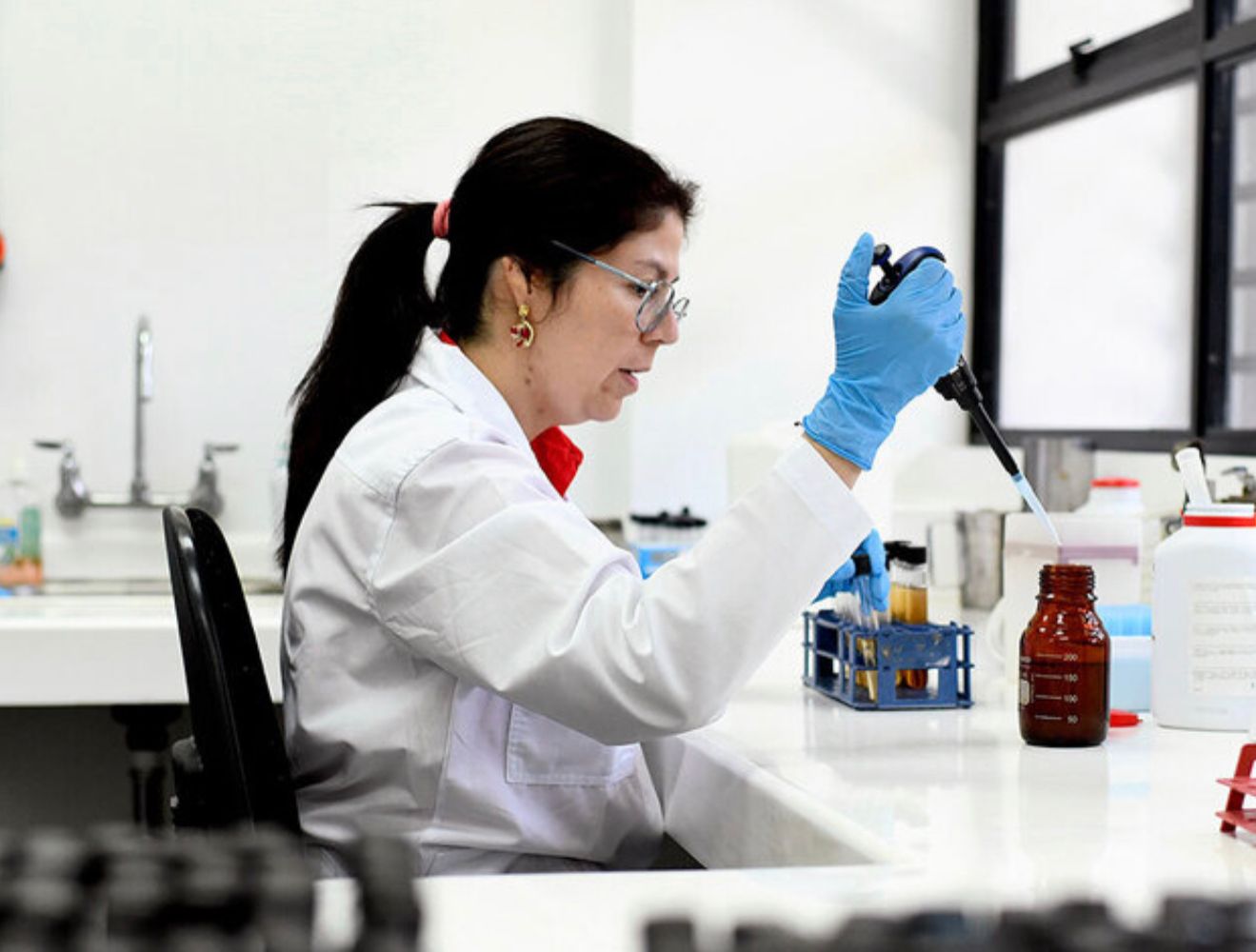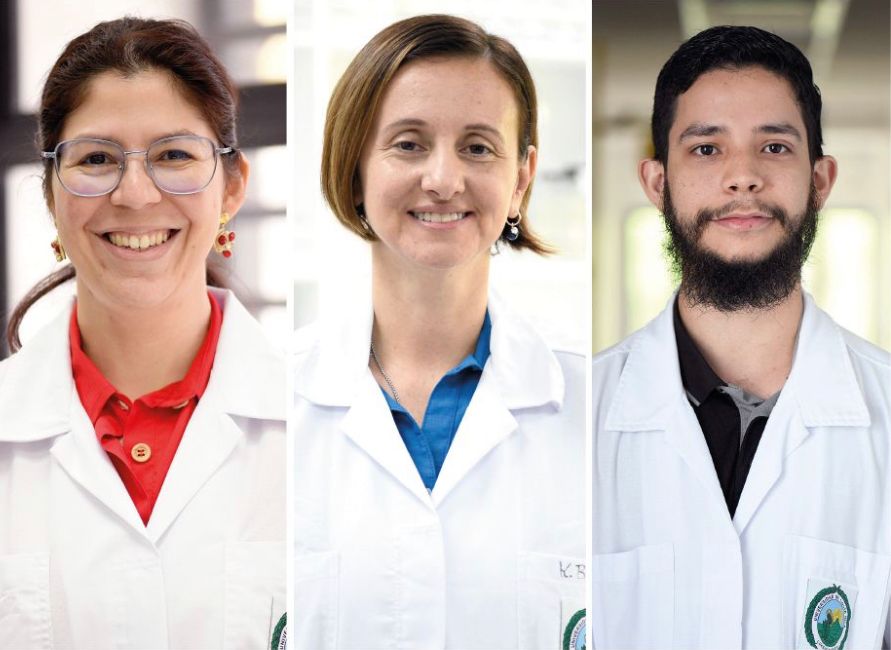BLOG | Bluephage
“It is necessary to implement other types of indicators, such as somatic coliphages, to guarantee water quality at a more demanding level”

Bluephage interviews with Dr. Luz Chacón Jiménez, a recognized expert in the field of microbiology, belonging to the Department of Infection-Nutrition Section of INISA (National Institute for Environmental Health Research) in Costa Rica.
Dr. Luz Chacón Jiménez is a Ph.D. candidate in Sciences from the University of Costa Rica, a Master’s degree in Biomedical Sciences with an emphasis in Biochemistry, and a Bachelor’s degree in Microbiology and Clinical Chemistry from the same university in 2005. Her expertise is in water microbiology, with special emphasis on virology. Her work has led to understanding and addressing the risks associated with viruses in water, which is vital for public health and food safety.
In addition, Dr. Chacón Jiménez Luz has investigated the influence of the environment on human health. Her work has contributed to understanding how various environmental factors can affect people’s health, which is crucial for developing prevention strategies.
1. Your experience lies in carrying out water microbiology projects involving the analysis of indicator and pathogenic microorganisms in surface, drinking, and waste waters at the University of Costa Rica.
Could you give us an idea of the context of water quality in Costa Rica?
Costa Rica has an excellent water production system for human consumption. At the Latin American level, along with Chile, we are the only countries to guarantee uninterrupted potable water service through the pipeline throughout the national territory. Regarding surface water management, there are more challenges since. Despite legislation for the control of discharges, it is possible to find illegal wastewater discharges in surface water bodies. The situation becomes more complicated if these waters are used to irrigate raw vegetables. Furthermore, concerning wastewater, although more than 90% of our excreta are treated in improved sanitation structures, the treatment systems used, such as septic tanks, are only sometimes the most adequate. Furthermore, wastewater discharges from wastewater treatment plants, while improving the physicochemical characteristics of treated water, generally have little impact on its microbiological quality. This implies releasing potentially pathogenic and even antimicrobial-resistant microorganisms into surface water bodies.
2. In one of your articles, “Temporal and spatial evaluation of the microbiological quality of surface water: the case of a water supply system for human consumption in Costa Rica”, which you co-authored and which was published in June 2022. In the article, you mention that the effects of fecal contamination in Costa Rica have not yet been thoroughly investigated.
What are the regulations in Costa Rica, and do you believe the existing water quality indicators are adequate to ensure public health?
In Costa Rica, microbiological quality indicators are limited to determining fecal coliforms (surface water, wastewater, and water for human consumption) and Escherichia coli (for drinking water). Helminth eggs are also included when wastewater discharge directly impacts a water source used for irrigation. However, some pathogens can survive the treatment processes (potabilization or purification), such as viruses (Hepatitis A, norovirus) and protozoa (Cryptosporidium sp. and Giardia sp.). It is necessary to implement other types of indicators, such as somatic coliphages, to guarantee water quality at a more demanding level.
3. Could you share with us the research your team has carried out to support the claim that somatic coliphages are reliable indicators of fecal contamination in water?
What are the main conclusions that can be drawn from your findings?
We worked with somatic coliphages for over ten years in our laboratory at the Instituto de Investigaciones en Salud (INISA) of the University of Costa Rica. In a first study associated with the quality of drinking water, we found that some samples of “drinking” water showed somatic coliphages after the potabilization process and that when the samples were free of coliphages, the incidence of diarrhea in the areas served by the aqueducts under study decreased in cases of diarrhea (https://www.scielo.sa.cr/pdf/rcsp/v24n2/1409-1429-rcsp-24-02-00160.pdf). This same relationship was found in other regions of the country (https://iwaponline.com/jwh/article/20/2/344/86847/Occurrence-of-pathogenic-microorganisms-in-small) where the presence of somatic coliphages in drinking water was associated with an increase in diarrhea in the population served.
In wastewater, we performed an analysis of somatic coliphages in parallel to the detection of pathogenic viruses such as norovirus, rotavirus, enterovirus, and hepatitis A virus; according to the frequency of detection of these viruses in water samples, we could find a mathematical association with the concentration of somatic coliphages in effluents, from there we proposed 3000 PFU/100 mL as the threshold concentration for safe discharge of wastewater into surface water bodies (https://journals.asm.org/doi/full/10.1128/AEM.00616-20).
4. In another recent article of yours, published in January 2023 on the social management of water in indigenous communities, you talk about the multiple causes that can fecally contaminate water for human consumption.
Do you consider that the methodologies for detecting microbial contamination of water resources are fast enough to warn of these risks in time?
One of the limitations of microbiological determinations has always been the waiting time required to obtain results from cultures. Standard methods can take up to 4 days to determine coliforms and two days to determine somatic coliphages. At the same time, there is a lack of infrastructure and economic resources in the country’s most remote areas, so using rapid tests (colorimetric or molecular) and traditional tests is complicated. However, it is becoming increasingly necessary to have robust tools for determining pathogenic microorganisms or indicators in all areas.
7. Do you think somatic coliphages will be incorporated into Costa Rican regulations to control the viral quality of this type of water use in the future?
In recent years, work has been carried out to update the regulations associated with drinking water quality, wastewater discharge, and the classification and use of surface water bodies. In the related forums, evidence has been presented on the need to include other types of microbial indicators to assess water quality. We hope to convince the authorities to include them, particularly somatic coliphages since we have scientific evidence to establish permissibility limits in drinking water and wastewater discharges.

The microbiologists of the team, from left to right: Luz Chacón, Kenia Barrantes y Luis Rivera

